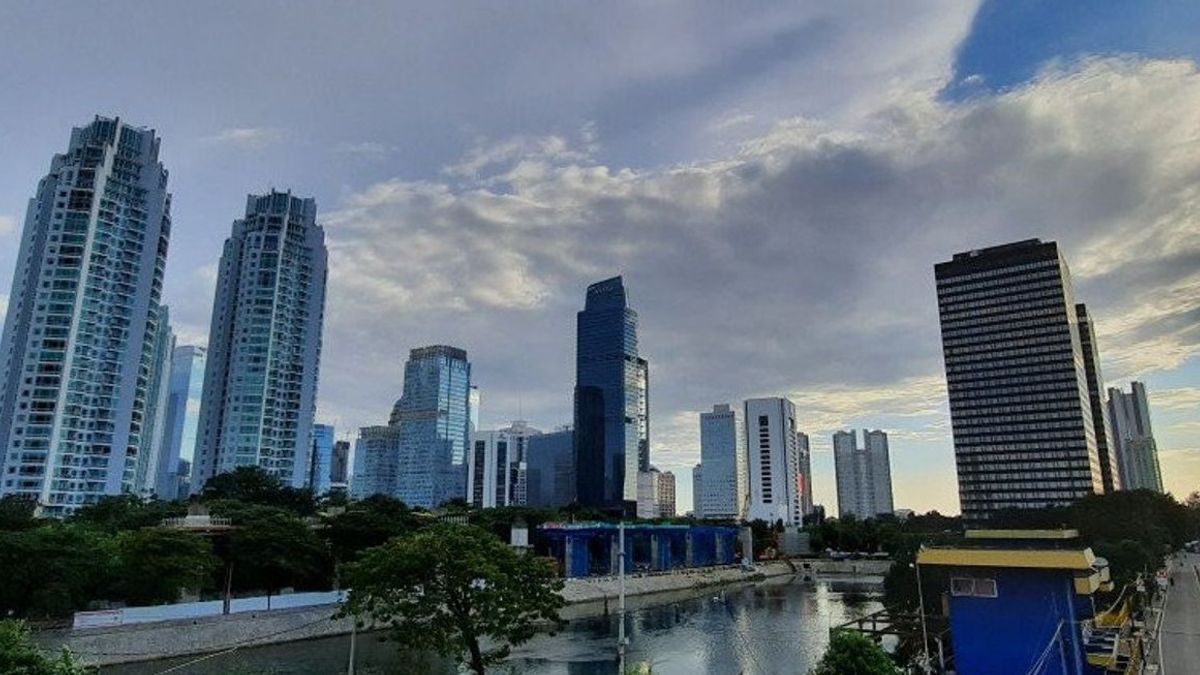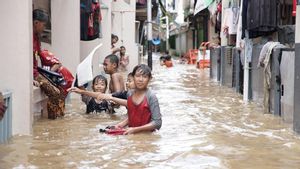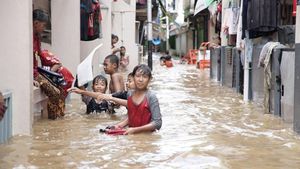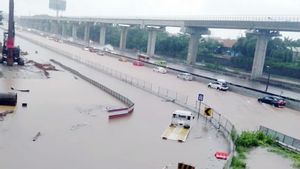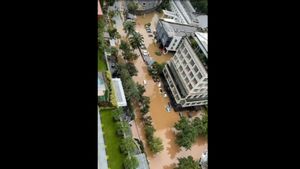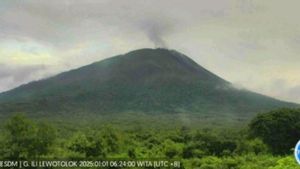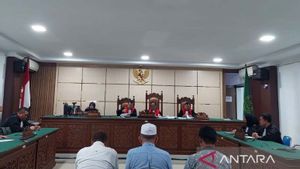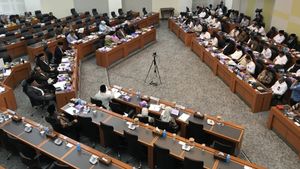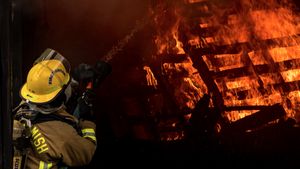JAKARTA - Head of the Meteorology, Climatology and Geophysics Agency (BMKG) Dwikorita Karnawati said that generally rain in the Jabodetabek area occurs at night until dawn and continues in the morning.
The community is aware of the potential for flooding that occurs at these times.
"Generally, rain occurs at night until dawn and continues into the morning. These are critical times and need to be watched out for," said Dwikorita at an online press conference, Saturday, January 20.
BMKG also predicts that heavy to very heavy rain could potentially occur evenly in the DKI Jakarta area for the next week.
Previously, BMKG had also issued an early warning on February 18-19 which predicted the Jabodetabek area would be subject to rain with heavy to very heavy intensity with rainfall between 100-150 mm.
SEE ALSO:
Based on data collected by BMKG, the highest rainfall was recorded in Pasar Minggu reaching 226 mm/day, then in Sunter Hulu 197 mm/day, Lebak Bulus 154 mm/day, and Halim 176 mm/day.
As a result of heavy rains, a number of areas and residential areas in the capital were flooded.
Deputy for Meteorology, Guswanto, explained that the extreme weather conditions in the Jabodetabek area were caused by a number of factors, namely on February 18-19 when there was a significant surge in the air from Asia, which caused an increase in rain clouds in western Indonesia.
Then observed activity of atmospheric disturbances in the equator zone (Rossby equatorial) resulting in a slowdown and a meeting of the wind from the north turning right through Jabodetabek, resulting in an increase in the intensity of the formation of rain clouds.
There is also a high level of air lability and wetness in most parts of western Java, this has led to an increase in the potential for rain cloud growth in the Jabodetabek area.
As well as being observed the presence of low-pressure centers in northern Australia which forms a convergence pattern in most of Java Island and also contributes to increasing the potential for rain cloud growth in western Java, including Jabodetabek.
"There are several factors that cause flooding in DKI Jakarta, namely the rain that falls around Jabodetabek which disgorges in Jakarta yaitu hujan yang jatuh di sekitar Jabodetabek yang bermuara di Jakarta, kemudian hujan yang jatuh di Jakarta sendiri serta ada pasang laut. Selain itu daya dukung lingkungan juga sangat berpengaruh, then the rain that falls in Jakarta itself so that there are tides. Apart from that, the supportability of the environment is also very influential," he said.
Currently, the Jabodetabek area is still at the peak of the rainy season which is estimated to continue from the end of February to early March 2021.
The English, Chinese, Japanese, Arabic, and French versions are automatically generated by the AI. So there may still be inaccuracies in translating, please always see Indonesian as our main language. (system supported by DigitalSiber.id)
